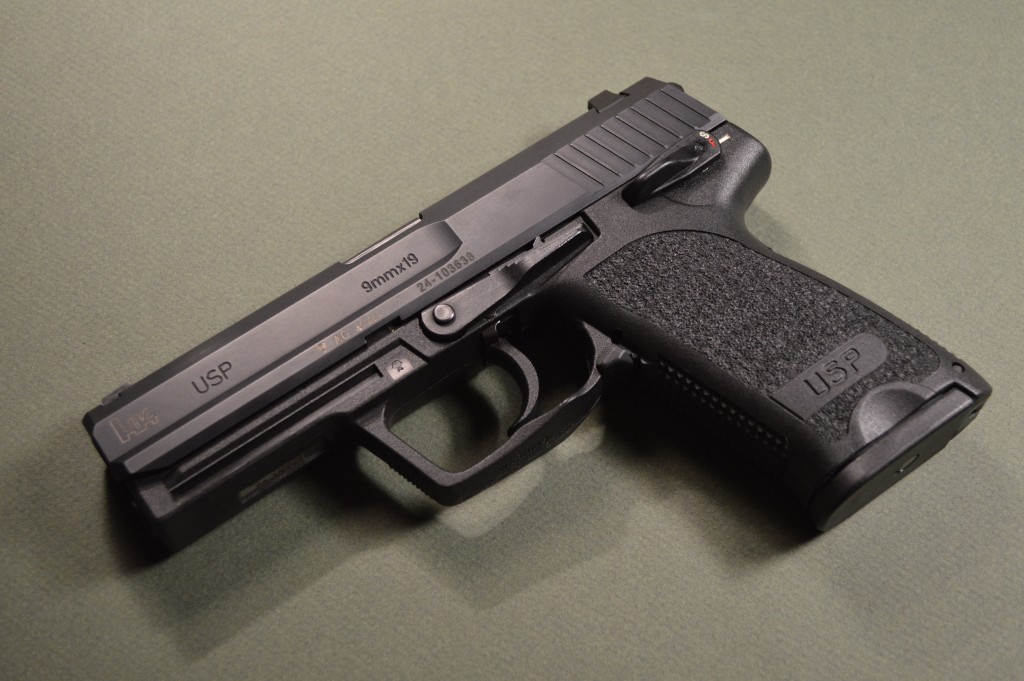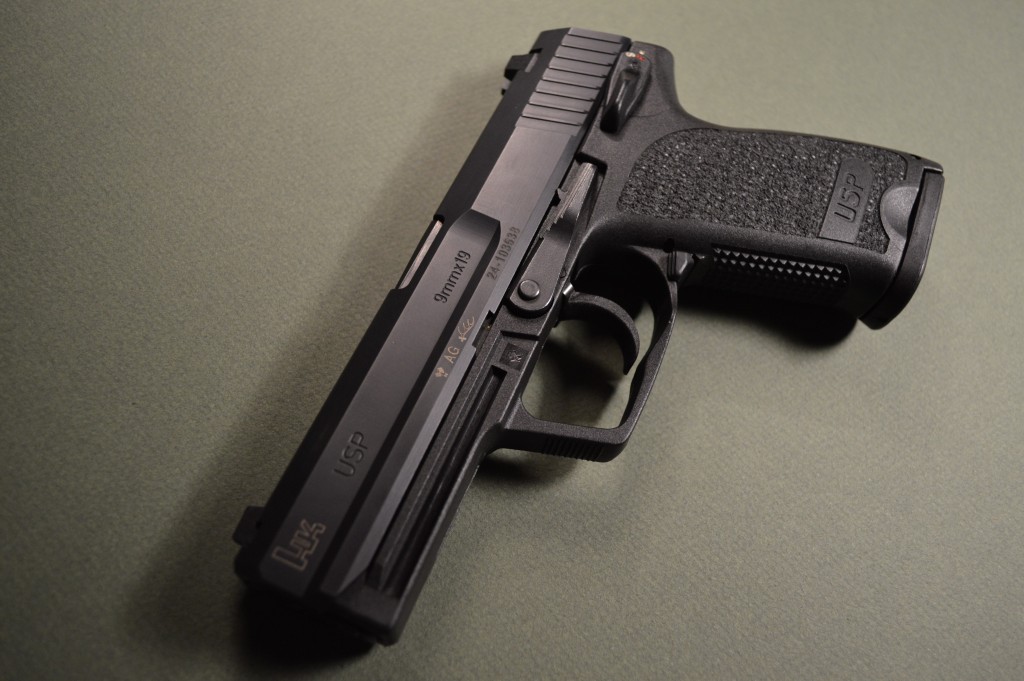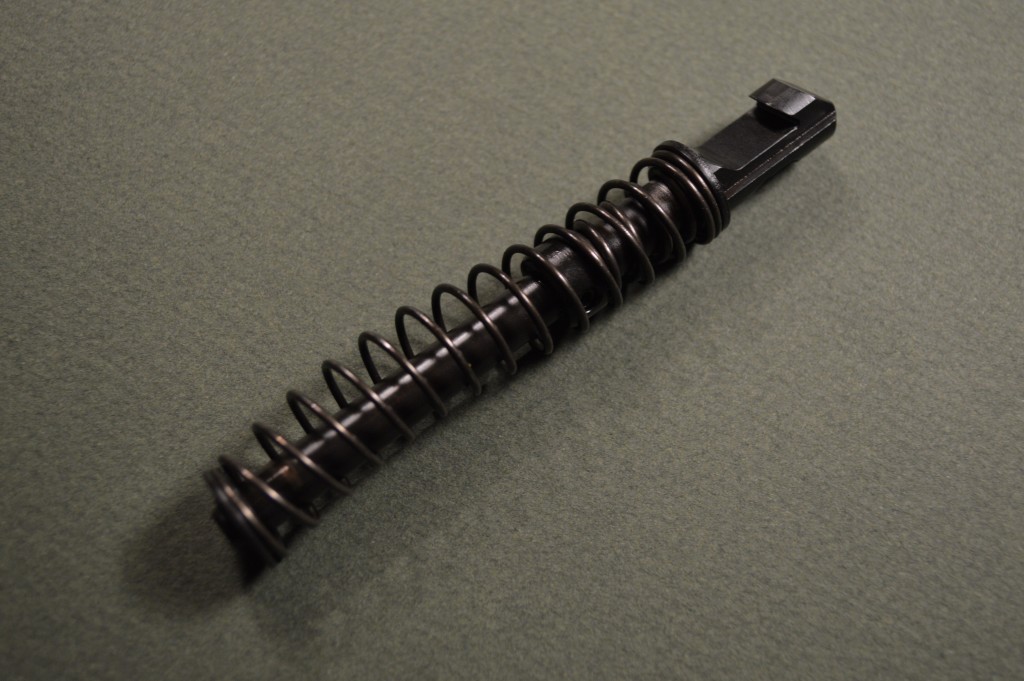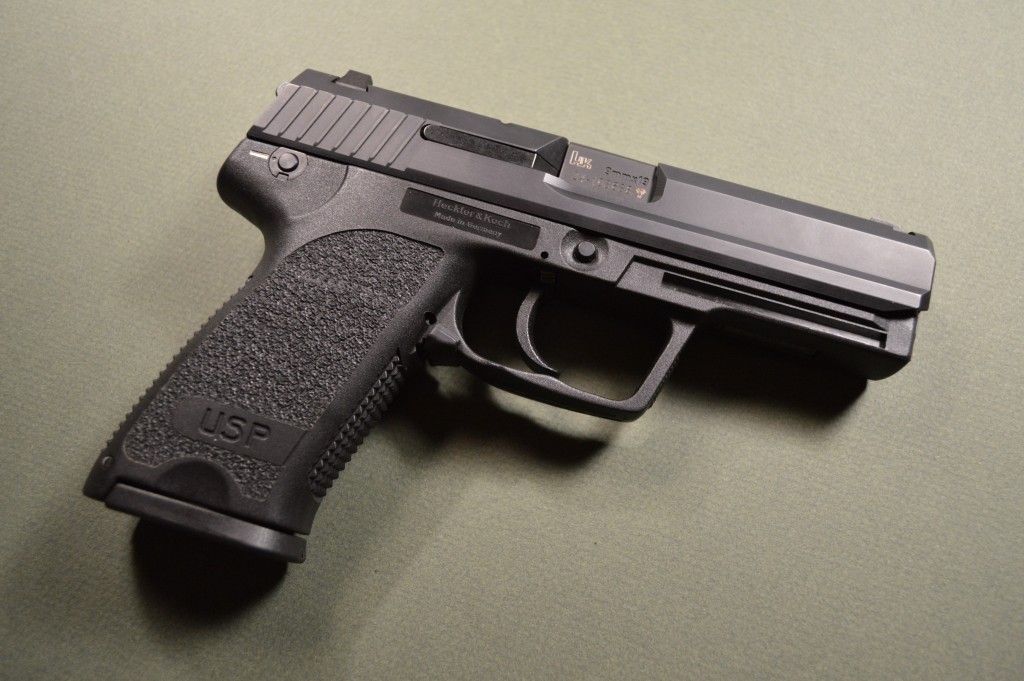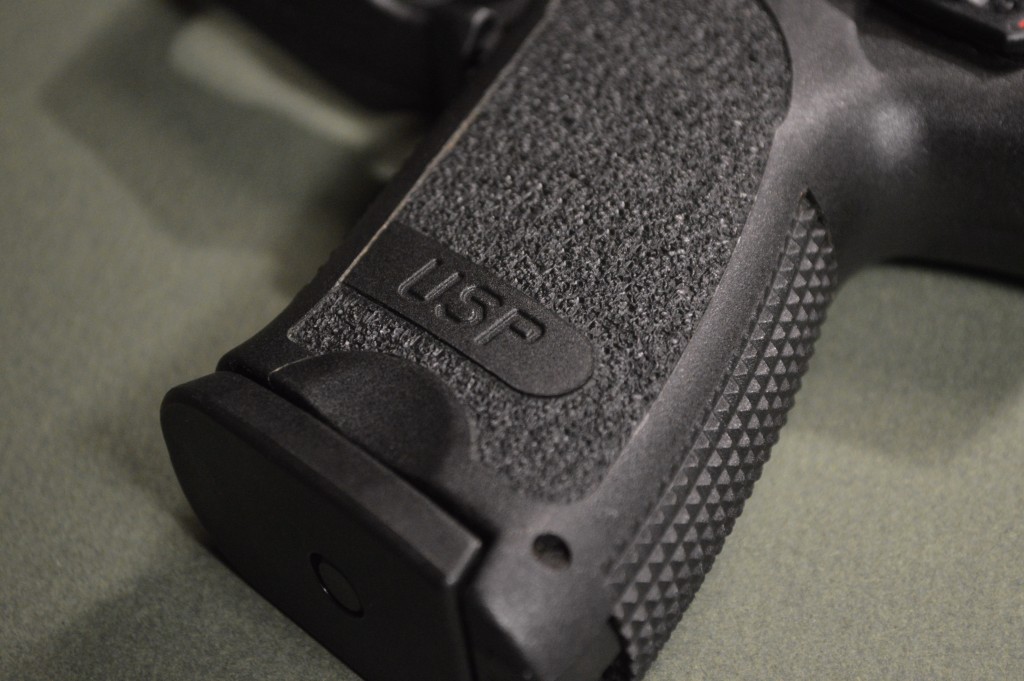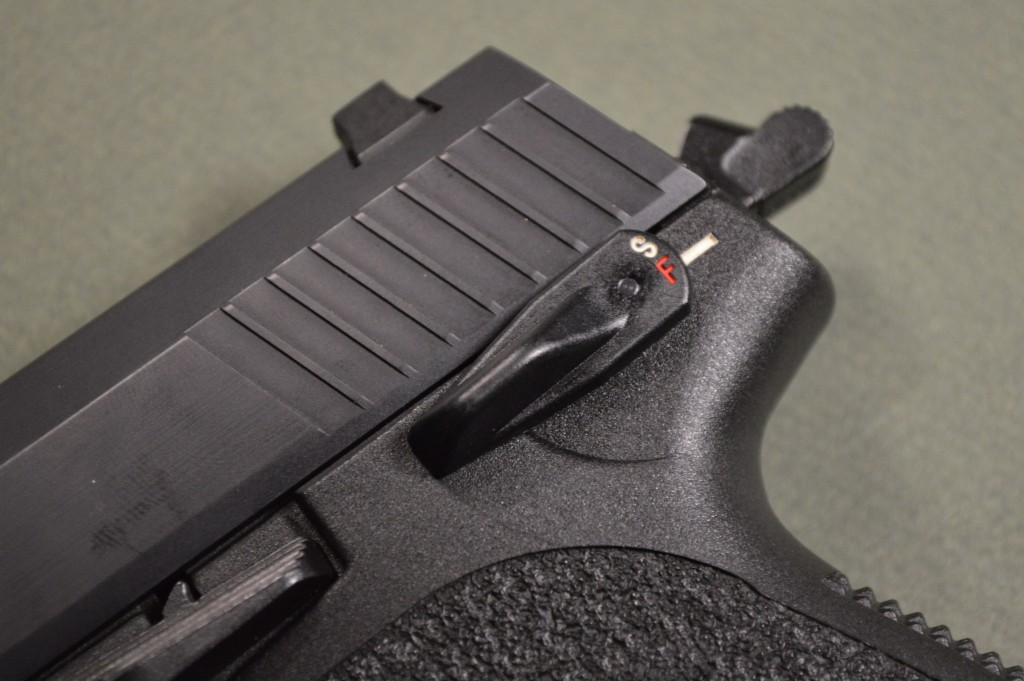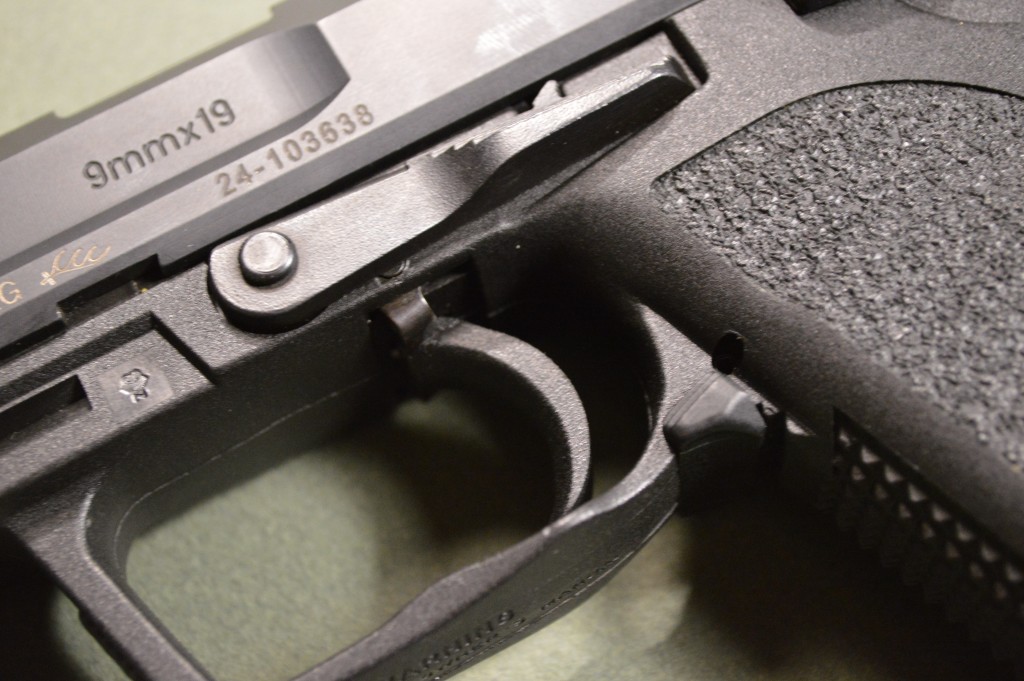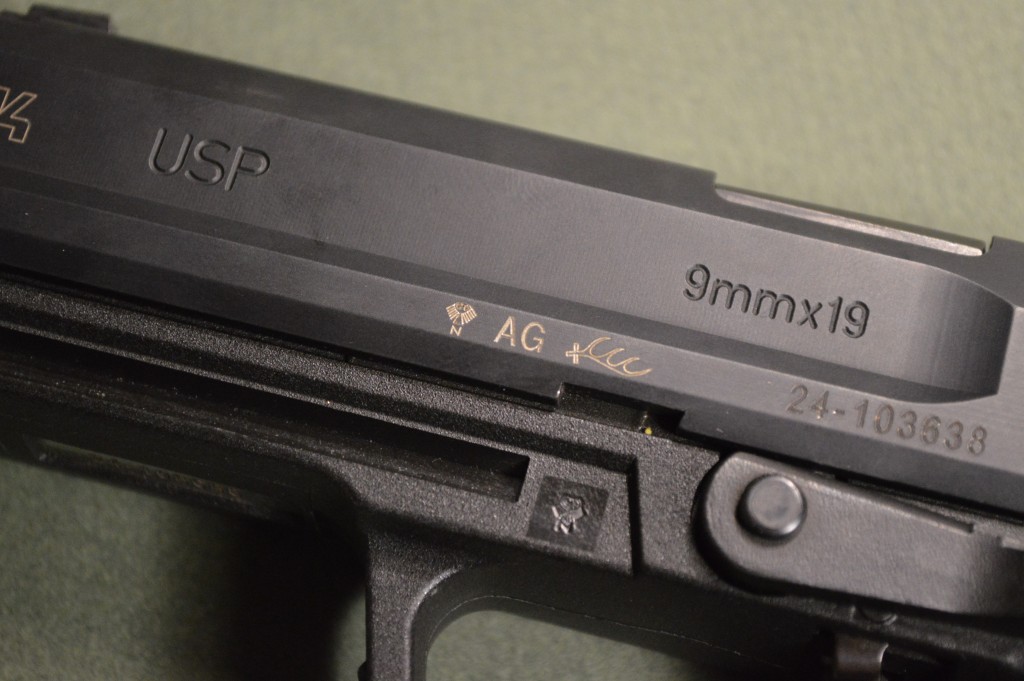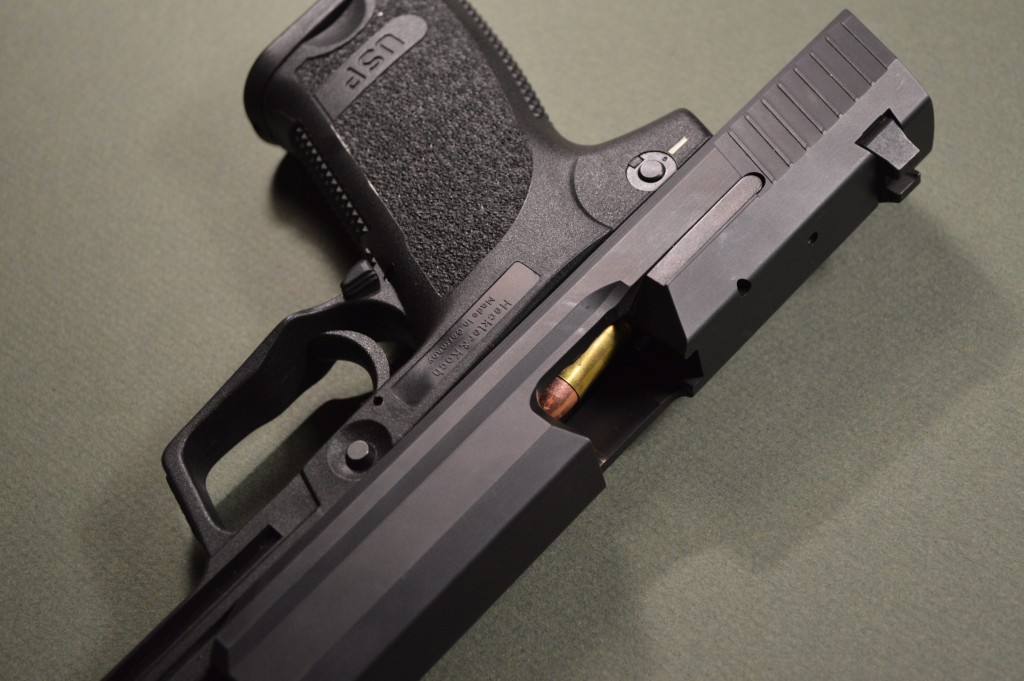Heckler & Koch USP Review (9mm)
Those who followed me at Modern Rifleman or know me from my work here are probably aware that video games and airsoft were my gateways to firearm ownership. The famous Heckler & Koch USP is no stranger to anyone who has played Counter Strike. And I will always remember my Tokyo Marui HK Mark 23 (MK 23) spring-operated airsoft replica. Much like HK’s real MK 23, the airsoft gun was an absolute behemoth, but even after selling it to a good friend I could not help but feel a certain attraction to HK handguns.
While at the range with some non-shooter friends back in college, I happened upon an irresistible deal. Kodiak Range in South Bend, Indiana received the Mark 23’s older, smaller, and more practical brother, the USP 9mm on consignment and I just had to have it. The example I purchased included 4 15-round magazines as well as all the accessories that come with a new pistol. The estimated round count for the USP at time of purchase was less than 200 rounds. All in, I paid $700 for my USP.
About the USP
The USP (Universal Self-loading Pistol) served as the template for the aforementioned MK 23. Initially developed for the US market as a .40 S&W sidearm, the 9x19mm USP was released alongside the .40 S&W version in 1993. Around 2 years later, HK released the larger .45 ACP variant. Though the firearm was originally intended for US law enforcement and commercial buyers, the USP has gained a substantial following internationally and a variant of the pistol (P8) is the primary issue sidearm for the German Bundeswher. Much like the revered 1911, the USP uses a Browning style cam-locked chamber meaning the barrel must be allowed to tilt upward slightly after firing.
Design & Components
As I mentioned previously, at its heart the USP operates very similarly to John Moses Browning’s Hi-Power and 1911 pistols. After the pistol is fired, the blowback causes the slide to travel rearward, tilting the barrel assembly up and unlocking the chamber. This is a time-proven system that is used in the vast majority of modern centerfire pistols.
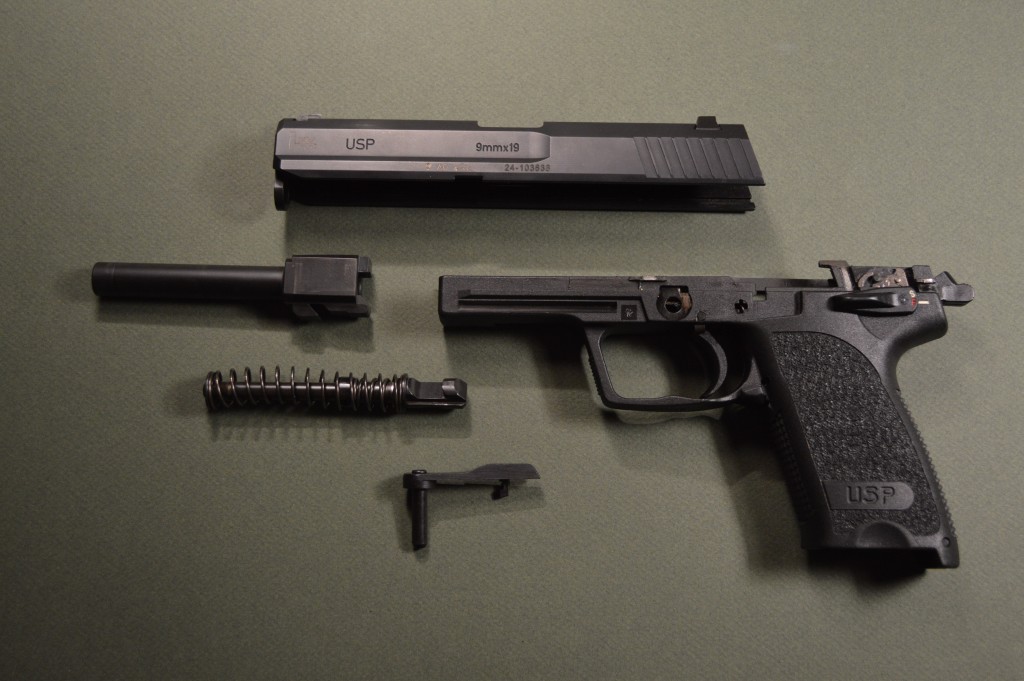
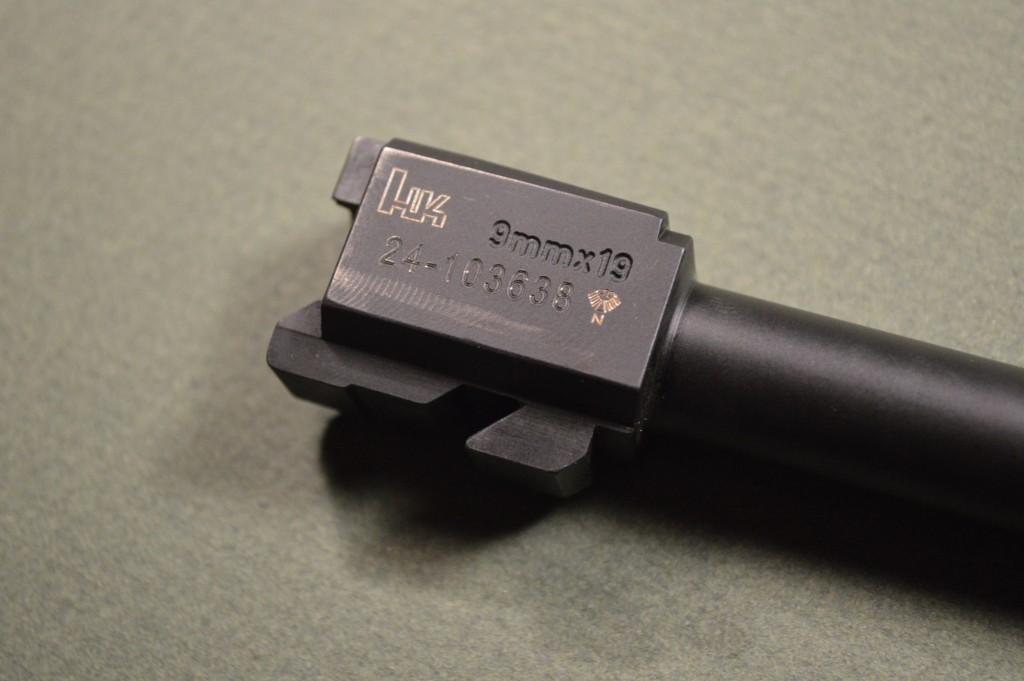
In addition to having a substantial, sloped breech, newer USP barrels (post-1996) have polygonal rifling similar to that found in Glocks and CZ82/83s. For those who are not familiar with this sort of design, polygonal barrels have several flats cut into them that spiral inside the bore. These flats “grip” the bullet as it exits the barrel, rather than cutting into the bullet as is the case with traditional land and groove rifling. Proponents of polygonal rifling claim that these barrels last longer and are easier to clean than traditional designs and that they also offer improved accuracy and velocity. It has been reported that during testing, HK cleared a squib round lodged in a USP barrel by firing another round behind it. According to these reports, the firearm survived the test with only minimal barrel bulging. I can only personally vouch for the claims related to cleaning the barrel. Compared to my Beretta M9, the USP does seem to be quicker to clean, if only by a small margin. The USP is also cold hammer forged, which ultimately makes for a very durable part.
Reloaders should take caution when using cast lead bullets with this barrel as according to HK and Glock (both makers of polygonal barrels), cast bullets can cause buildup and may suffer from an accuracy standpoint. Also, lead buildup reportedly can cause damage to the polygonal barrel. This warning in mind, I have heard from several reloaders that cast bullets work fine in these barrels. With 9mm ammunition being relatively inexpensive, I will likely stick with jacketed rounds for my USP.
The recoil system used by the USP is noteworthy. Rather than utilize a single recoil spring and guide rod as was the norm at the time of its development, the USP features a captive dual spring recoil assembly. When the handgun is fired, the larger outer spring serves as the primary recoil spring. At the rear-most part of the cycling motion, when the slide is nearly at its rearmost position, the inner spring is engaged as a recoil buffer. HK has claimed that in addition to reducing stress on the firearm, the spring system also reduces felt recoil by as much as 30%. While the USP is certainly a soft shooter, I cannot say that I notice significantly less recoil than is present when firing other handguns. In comparison to my M9, the two are pretty similar in this category. Based on my memory, it may be possible that the felt recoil on the USP is slightly less than your average pre-Gen 4 Glock, but I have yet to fire the two side-by-side. Regardless, shooters should not base a USP purchase solely on the recoil reduction characteristics of its spring system.
I would be remiss not to discuss the USP’s trigger system and options in this review. My example is what HK has dubbed a V1 (Variant 1). This means that it is a traditional single action and double action (SA/DA) handgun. However, HK also offers their Law Enforcement Modification (LEM) trigger as an alternative to the standard SA/DA variants. Essentially, the LEM trigger is HK’s equivalent to SIG Sauer’s DAK system in that it offers a consistent double action only trigger pull that has been substantially lightened in comparison to your average double action only (DAO) trigger. On my V1 I find that the DA trigger pull is long, but smooth. The SA pull is pleasantly light with an average reset, coming in between 3 and 4 millimeters. The break on the USP’s SA pull is not nearly as glasslike or predictable as my M9’s, but I am weird in that I prefer it this way. The trigger face on all USP variants is pleasantly wide and flat which does help to reduce the perceived trigger weight.
Lastly, the USP has a small lock inside the grip near the bottom of the mainspring. Using an included tool, turning this lock 90 degrees will lock the gun and prevent it from firing. I never use this feature, but it is there and unobtrusive.
Finish & Controls
Although utilitarian in design, I find the USP to be a very attractive handgun. The slide is finished using a carbon nitriding treatment similar to that found on Glocks. HK calls this treatment HE or Hostile Environment finishing and it seems to live up to the task. It is important to note that in contrast to a painted finish, the HE finish may appear worn in spots, but the firearm is still protected. With carbon nitriding, the protection goes beyond the surface. Because of this, HK firearms tend to hold up well even in salty environments.
The frame of the USP is made of high-impact and temperature resistant polymer. Although the mix for the polymer is proprietary to HK, it is likely a form of glass-filled nylon much like the Glock series and Smith & Wesson’s M&P line. The frontstrap and backstrap of the grip both feature highly aggressive texturing. Fortunately, this texturing is used sparingly enough that the pistol is still very comfortable to hold. In contrast, I find that the texture on the backstrap of pre-Gen 4 Glocks goes a little too high into the webbing between my thumb and index finger, causing some discomfort. Overall, the grip on the USP is reasonably comfortable and more than adequate for a combat sidearm, but it is not nearly as ergonomic as the M&P, P99/PPQ, or HK’s newer pistols such as the P2000 and P30. It feels thinner, but perhaps a bit longer frontstrap to backstrap than a Glock.
The manual safety can be found on the left side of the V1 handguns, near the hammer. Simply pushing the lever up will engage the safety. The USP safety allows the slide to cycle, but locks the trigger. Pushing the lever down past the red “F” for fire will decock the pistol. The safety on the USP is very positive and allows the handgun to be safely carried “cocked and locked”.
The USP, as with all current HK offerings, uses a lever-type (or paddle) magazine release just below the trigger guard. This feature really bothers some shooters to the point that they will not even consider the USP as a viable sidearm. I love this release and wish more manufacturers would include it as an option on their handguns. For someone with smaller hands, the lever release works very well as it facilitates the use of the middle finger of the dominant hand to drop the magazine. For button-style releases, I find that I need to turn the pistol slightly to comfortably release the magazine. The USP addresses this issue for me. The magazine release is also naturally ambidextrous.
The slide release on the USP is very large and extends back far enough that smaller hands can easily release the slide using the lever. It has enough spring tension that accidentally locking the slide while firing is unlikely. Unlike newer HK offerings, the slide release on the USP is not ambidextrous.
Determining the production year for a USP is very easy. HK, like Walther, uses a standard letter system that is common on German-made firearms. HK and Walther both use the Ulm proof house, meaning the same dating system applies to both manufacturers. The two letters coincide with the last two digits of the production year. As an AG (06) coded pistol, my USP was made in 2006.
Sights
The USP makes use of a standard 3-dot sight system. The dots are bright white, but are not night sights so illumination should not be expected. Strictly as a matter of preference, I tend to prefer the Heinie “Straight Eight” or the i-dot sights as found on the M9 over the 3-dot system. Still, the USP’s sights work well and have very minimal wiggle room when viewing the front blade through the rear notch.
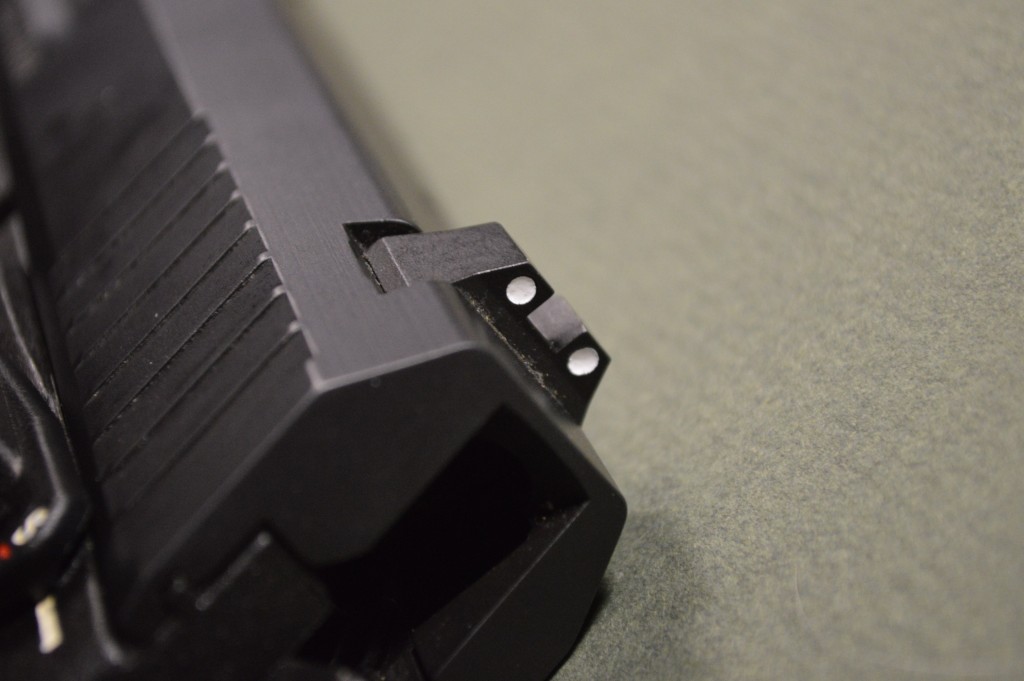
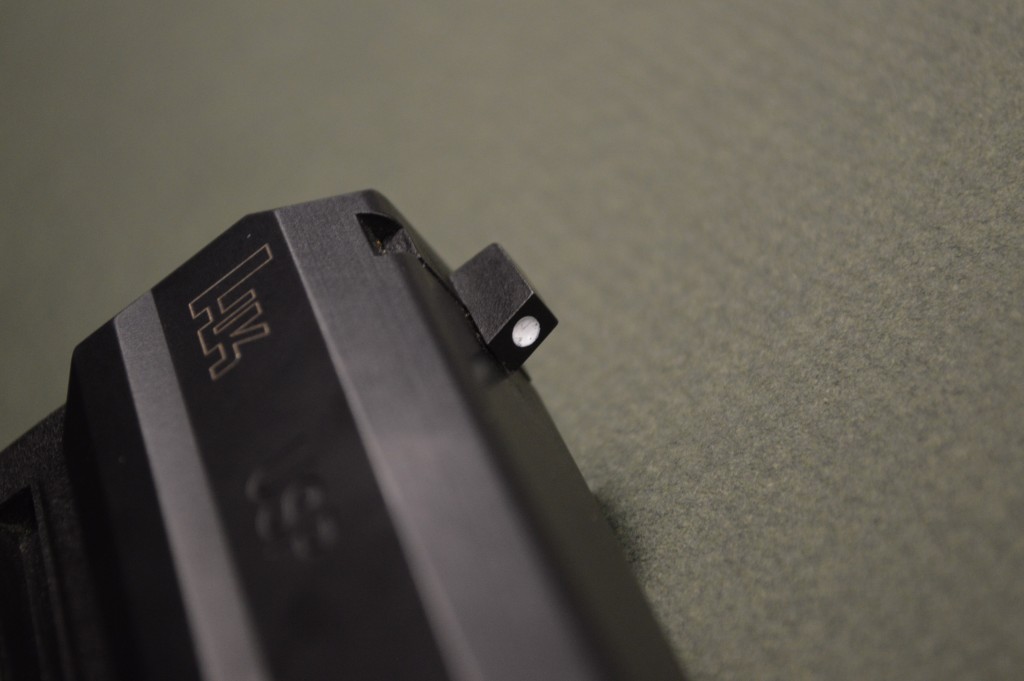
Magazines
The magazines for the USP are made out of polymer. For someone who is used to SIGs, Berettas, or 1911s, this may be a bit discomforting at first. However, my experience has shown that they hold up very well. The standard USP 9mm magazine holds 15 rounds, but 18 round magazines are available for use in combination with the Jet Funnel magazine well. Some newer handguns (XD/XDM, M&P) have managed to squeeze more rounds into their magazines, but for the overall grip profile of the USP, 15 rounds is pretty solid. Both flat and extended baseplates are available for the USP magazines. I have two of each, but generally prefer the flat ones.
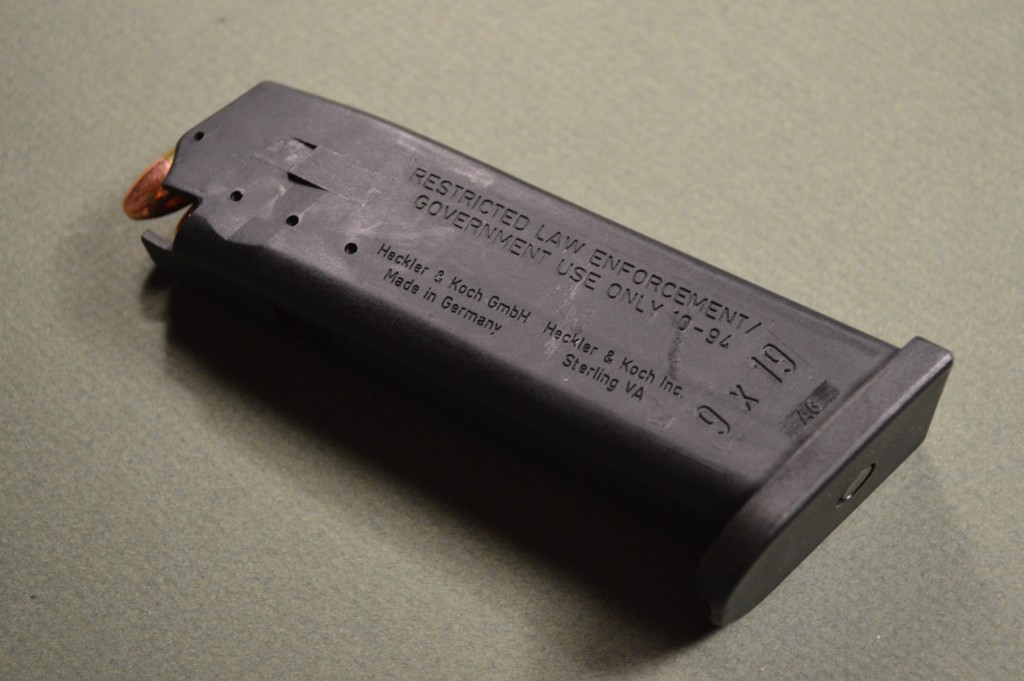

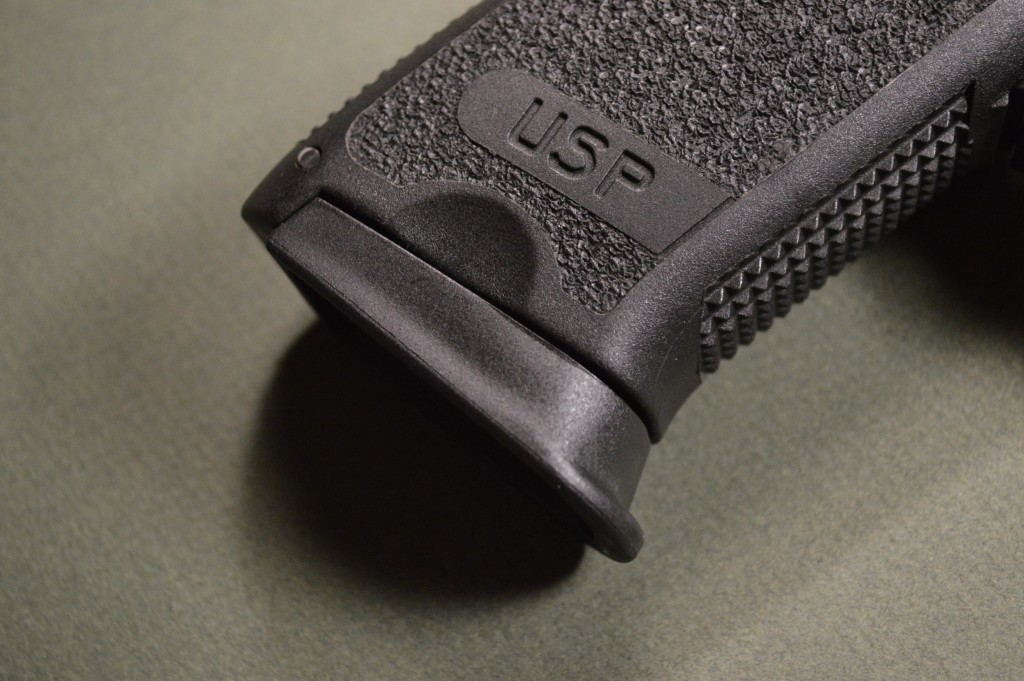
Range Report
Since purchase, I have taken the USP to the range dozens of times. I am always surprised to see how much better I shoot with it than my Colt/Walther .22 LR 1911 and my M9. For me, the firearm seems to fit perfectly. Although I am not sure that felt recoil or muzzle flip are much different with the USP than they are with the M9, I consider the USP a very soft shooter given its light weight. Furthermore, the gun is far more accurate than I am, but despite my weaknesses I can still hit a paper plate at 25 yards with relative ease using the USP. It should be noted that I have never had a malfunction while shooting my example, though I do tend to baby this gun and try to keep it as clean as possible.
Conclusion
In my opinion, the USP is among the best pistols ever conceived. It is reliable, lightweight, soft shooting, and has an above-average trigger, especially for a service pistol. I have fired several different handguns and the only one that comes close to working as well as the USP does for me is the Smith & Wesson M&P 9mm. If I am taking 9mm ammunition to the range with me, you can bet the USP will be in tow as well. It is because of the USP that I now lust after a P2000 or USP Compact. I must admit that I am a bit sour on the fact that factory-threaded barrels are so expensive ($300+). I have a SWR Octane 45 pending approval and hope to use the USP as a suppressor host. Although it is a pricy handgun, shooters who are willing to stretch the budget a bit are likely to be pleased with the USP or one of the newer HK designs inspired by it, such as the P2000 and P30.
Plus-Minus
+ Ultra reliable
+ Good finish
+ Solid trigger
+ Several trigger options
+ Soft shooter
+ Good manual safety
– Proprietary rail
– Average ergonomics
– Expensive, both the pistol and accessories
An information security professional by day and gun blogger by night, Nathan started his firearms journey at 16 years old as a collector of C&R rifles. These days, you’re likely to find him shooting something a bit more modern – and usually equipped with a suppressor – but his passion for firearms with military heritage has never waned. Over the last five years, Nathan has written about a variety of firearms topics, including Second Amendment politics and gun and gear reviews. When he isn’t shooting or writing, Nathan nerds out over computers, 3D printing, and Star Wars.

